
<translation>Reflection on Architecture Day in Brno</translation>
Last Sunday, a series of architectural events took place in several Czech cities, aiming to take to the streets and connect architecture with everyday life. Celebrations of Architecture Day reached both large metropolises and small towns and mountain villages, where the number of permanent residents slightly exceeds a hundred.
World Architecture Day is celebrated annually on the first Monday of October, coinciding with World Habitat Day. Several holidays also fall on each day of the year. Today marks World Post Day, tomorrow we will celebrate World Mental Health Day followed by the Day of Heritage Apple Varieties. We should think about the environment we live in more often than just once a year when the calendar commands us to do so.
Sunday, October 2, 2011, was different – not global, but rather as local as possible and primarily celebrating the tenth anniversary of the establishment of the Circle. I hold great admiration for the activities of all the people who have gathered around Marcela Steinbachová for a full decade, and thus I happily accepted her offer to take part in the celebration of World Architecture Day in dozens of Czech cities. From the very beginning, the Circle committed to leave the academic grounds and held its lectures in various cafes, industrial monuments, art galleries, and alternative clubs. Our mission was thus clear – to return to where we grew up and bring architecture closer to the widest possible audience of laypeople.
Architecture Day in Brno began with a calm morning walk through the Masaryk District, where I endured daily martyrdom to nursery, kindergarten, and school until I was fifteen. The main message of the Sunday journey was to convey that the environment in which we grow up significantly influences us, even if we are initially unaware of it. People usually appreciate these values only later or sometimes never. About thirty enthusiasts of interwar architecture thoroughly enjoyed the early buildings of Jindřich Kumpošt, Josef Polášk, Bohuslav Fuchs, Ernst Wiesner, and Karel Lehrmann on a two-kilometer circuit.
After a light Sunday lunch, the sports part of Architecture Day could begin – a splendid bike ride through the most significant construction sites of contemporary Brno with Osamu Okamura and Forum 4AM, attracting around 150 interested parties from among students, graduates, the very authors of the proposed projects, but mainly supporters of fast and healthy transportation in the city. At several locations, the authors themselves were waiting for us to vividly describe how their building would one day look. During the ride through the city, we were once again able to experience firsthand how little the city accommodates cyclists. It was not just the absence of bike paths but also the understanding of fellow citizens, who were taken aback by the numerous group and voiced their disagreement loudly. What most visited projects did not lack, on the other hand, was maximum yield from parking spaces for cars. The fading Indian summer and the beginning of Coffee Week were ultimately etched into the satisfied faces of all participants slowly riding through Brno.
For the sportily resilient, there was a run through Wilson's Forest at the end of the day, from the 'New House' colony to the 'Under the Water Tower' colony, with the Poříšková landmark at the top of the hill. With a number of compromises, we passed by Jurkovič’s, Kroh’s, and Kuba’s villas. However, mostly we strengthened our health in the fresh air of the forest, as those with a healthy spirit do not allow unhealthy buildings to their bodies. In contrast to the calm morning walk, this relatively small neighborhood revealed its dynamic face.
Given the interest of most participants, it is expected that similar architectural outings will take place significantly sooner and more often than on the occasion of the twentieth anniversary of the Circle.
World Architecture Day is celebrated annually on the first Monday of October, coinciding with World Habitat Day. Several holidays also fall on each day of the year. Today marks World Post Day, tomorrow we will celebrate World Mental Health Day followed by the Day of Heritage Apple Varieties. We should think about the environment we live in more often than just once a year when the calendar commands us to do so.
Sunday, October 2, 2011, was different – not global, but rather as local as possible and primarily celebrating the tenth anniversary of the establishment of the Circle. I hold great admiration for the activities of all the people who have gathered around Marcela Steinbachová for a full decade, and thus I happily accepted her offer to take part in the celebration of World Architecture Day in dozens of Czech cities. From the very beginning, the Circle committed to leave the academic grounds and held its lectures in various cafes, industrial monuments, art galleries, and alternative clubs. Our mission was thus clear – to return to where we grew up and bring architecture closer to the widest possible audience of laypeople.
Architecture Day in Brno began with a calm morning walk through the Masaryk District, where I endured daily martyrdom to nursery, kindergarten, and school until I was fifteen. The main message of the Sunday journey was to convey that the environment in which we grow up significantly influences us, even if we are initially unaware of it. People usually appreciate these values only later or sometimes never. About thirty enthusiasts of interwar architecture thoroughly enjoyed the early buildings of Jindřich Kumpošt, Josef Polášk, Bohuslav Fuchs, Ernst Wiesner, and Karel Lehrmann on a two-kilometer circuit.
After a light Sunday lunch, the sports part of Architecture Day could begin – a splendid bike ride through the most significant construction sites of contemporary Brno with Osamu Okamura and Forum 4AM, attracting around 150 interested parties from among students, graduates, the very authors of the proposed projects, but mainly supporters of fast and healthy transportation in the city. At several locations, the authors themselves were waiting for us to vividly describe how their building would one day look. During the ride through the city, we were once again able to experience firsthand how little the city accommodates cyclists. It was not just the absence of bike paths but also the understanding of fellow citizens, who were taken aback by the numerous group and voiced their disagreement loudly. What most visited projects did not lack, on the other hand, was maximum yield from parking spaces for cars. The fading Indian summer and the beginning of Coffee Week were ultimately etched into the satisfied faces of all participants slowly riding through Brno.
For the sportily resilient, there was a run through Wilson's Forest at the end of the day, from the 'New House' colony to the 'Under the Water Tower' colony, with the Poříšková landmark at the top of the hill. With a number of compromises, we passed by Jurkovič’s, Kroh’s, and Kuba’s villas. However, mostly we strengthened our health in the fresh air of the forest, as those with a healthy spirit do not allow unhealthy buildings to their bodies. In contrast to the calm morning walk, this relatively small neighborhood revealed its dynamic face.
Given the interest of most participants, it is expected that similar architectural outings will take place significantly sooner and more often than on the occasion of the twentieth anniversary of the Circle.
The English translation is powered by AI tool. Switch to Czech to view the original text source.
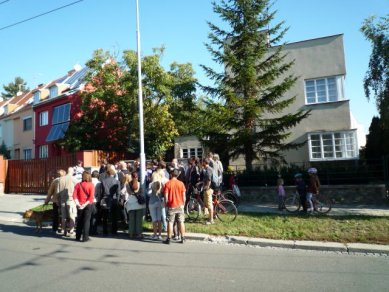
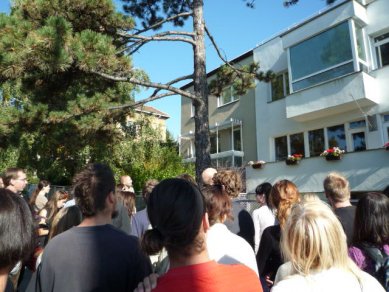
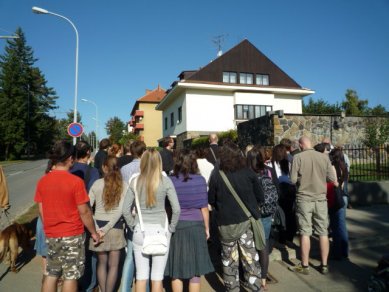
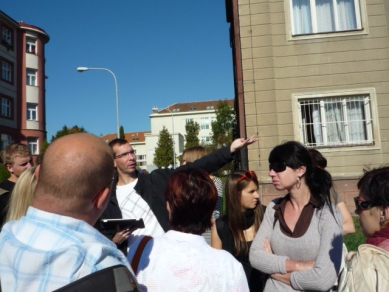
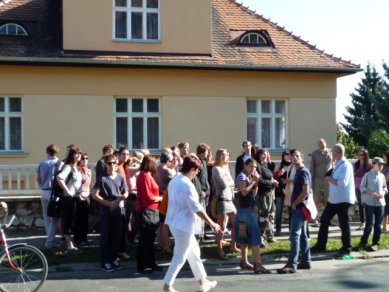
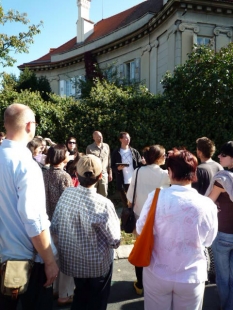
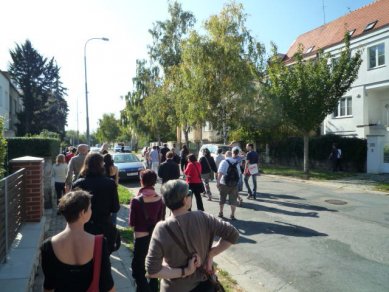
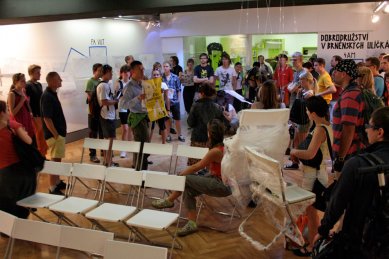

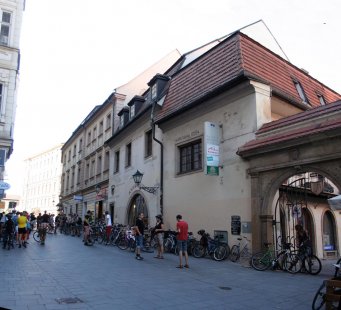

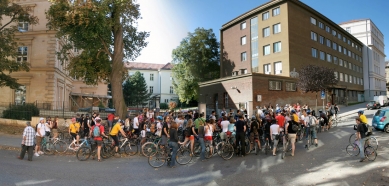
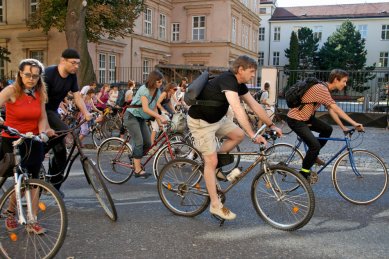
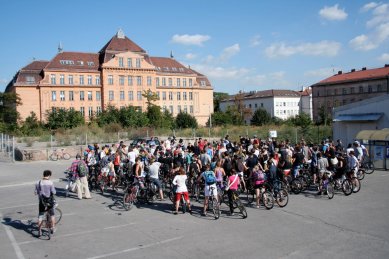
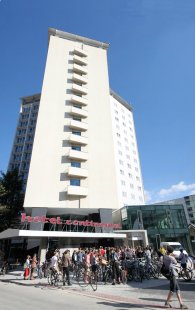
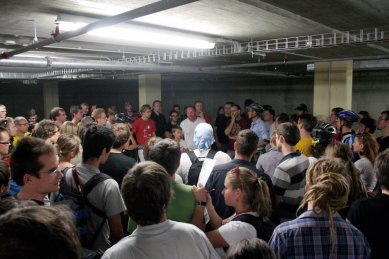
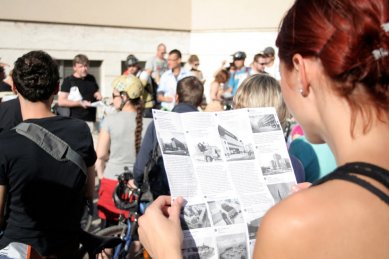
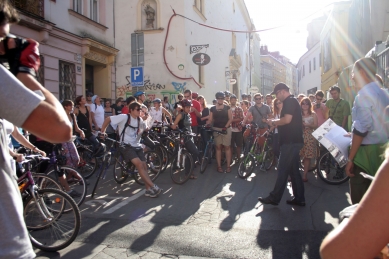
5 comments
add comment
Subject
Author
Date
...
Viktor Vlach
10.10.11 09:21
Viktore, musím přiznat, že...
Petr Šmídek
10.10.11 01:44
...
Viktor Vlach
10.10.11 03:14
ach jo, jen houst
Jan Sommer
10.10.11 09:22
...
Petr Šmídek
12.10.11 12:35
show all comments






